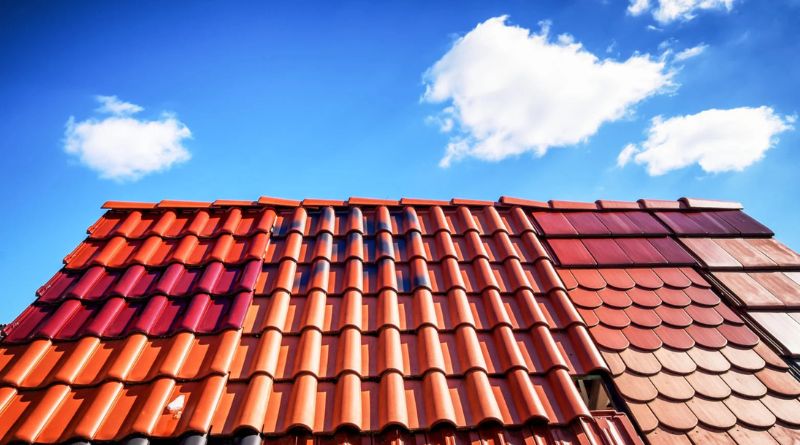Clay Roof Tiles: Types, Properties, and Advantages
Clay roof tiles have been used for centuries and remain a popular roofing material in many parts of the world due to their durability, aesthetic appeal, and other beneficial properties. Here’s an overview of the types, properties, and advantages of clay roof tiles:
Types of Clay Roof Tiles:
- Flat Tiles: These are simple, flat-shaped tiles that give a clean and classic look to the roof.
- Pantiles: These are S-shaped tiles with curved edges, offering a more rustic appearance.
- Roman Tiles: Semi-cylindrical in shape, they interlock with one another, providing a distinctive and elegant look.
- Barrel Tiles: Also known as Spanish or Mission tiles, these are half-cylindrical tiles with excellent water-shedding capabilities.
Properties of Clay Roof Tiles:
- Durability: Clay tiles have an extended lifespan and can last for several decades, even up to a century, when properly maintained. They are highly resistant to rot, insects, and fire, making them a long-term roofing solution.
- Weather Resistance: Clay tiles can withstand harsh weather conditions, including heavy rain, snow, and strong winds. They have low water absorption rates, which prevents water damage and frost resistance, ensuring they don’t crack in freezing temperatures.
- Energy Efficiency: Clay tiles have natural insulation properties, which can help regulate indoor temperatures, reducing the need for excessive heating or cooling and leading to energy savings.
- Color Retention: The natural color of clay tiles is baked into the material, ensuring that it remains vibrant and doesn’t fade over time. This helps maintain the aesthetic appeal of the roof.
- Environmentally Friendly: Clay roof tiles are made from natural clay and are a sustainable and eco-friendly roofing option. They can be recycled and are non-toxic.
Advantages of Clay Roof Tiles:
- Aesthetic Appeal: Clay tiles offer a timeless and elegant look to the roof, enhancing the overall appearance of a building. They come in various shapes, colors, and textures, allowing for versatile design options to complement different architectural styles.
- Low Maintenance: Once installed correctly, clay tiles require minimal maintenance, saving homeowners time and money in the long run.
- Fire Resistance: Clay tiles are non-combustible, providing an added layer of fire protection to the building, which is especially important in areas prone to wildfires or fire hazards.
- Increased Property Value: The aesthetic and functional benefits of clay roof tiles can enhance the curb appeal and value of a property, making it an attractive investment for homeowners.
- Sound Insulation: Clay tiles have excellent sound insulation properties, reducing external noise and creating a quieter and more peaceful living environment inside the house.
Despite their numerous advantages, clay roof tiles also have some considerations, such as their weight, which might require additional roof support in some cases. Additionally, their initial cost may be higher compared to other roofing materials, but their long-term durability and low maintenance costs often offset this initial investment. Overall, clay roof tiles remain a popular and viable choice for many homeowners seeking a durable, aesthetically pleasing, and environmentally friendly roofing solution.
FAQs
Frequently Asked Questions (FAQs) about Clay Roof Tiles:
- Are clay roof tiles suitable for all climates? Clay roof tiles are generally well-suited for various climates. They excel in regions with hot and dry weather as well as areas prone to heavy rains. Their ability to withstand extreme temperatures and weather conditions makes them a versatile roofing option. However, in extremely cold climates, you should ensure proper installation and maintenance to prevent potential issues like freeze-thaw damage.
- How long do clay roof tiles last? Clay roof tiles have a long lifespan and can last for several decades, often ranging from 50 to 100 years or more. Their durability and resistance to environmental factors contribute to their extended longevity.
- Are clay roof tiles heavy? Yes, clay roof tiles can be relatively heavy compared to some other roofing materials. The weight of the tiles depends on their size and design. Before installing clay tiles, it’s essential to assess the structural integrity of the roof and, if necessary, provide additional support.
- Are clay roof tiles expensive? Clay roof tiles tend to have a higher upfront cost compared to certain roofing materials. However, when factoring in their long lifespan and low maintenance requirements, they often prove to be cost-effective over time. Additionally, their aesthetic appeal can increase property value, further justifying the investment.
- Can clay roof tiles be recycled? Yes, clay roof tiles can be recycled. When replacing old tiles, they can be reused in various construction projects or crushed to create aggregate for roadbeds and other applications.
- Do clay roof tiles come in different colors and styles? Yes, clay roof tiles are available in a wide range of colors, shapes, and styles. Homeowners can choose from various options to suit their architectural preferences and overall design of the building.
- Are clay roof tiles fire-resistant? Yes, clay roof tiles are non-combustible and have excellent fire resistance. This feature provides an added layer of protection to the structure, making them a preferred choice in fire-prone areas.
- Do clay roof tiles require maintenance? While clay roof tiles are low-maintenance, regular inspections and cleaning are recommended to ensure their longevity. Checking for damaged or broken tiles, clearing debris, and removing moss or algae growth can help preserve the roof’s integrity.
- Can clay roof tiles withstand hail? Clay roof tiles have good impact resistance and can withstand moderate hailstorms. However, extremely large or severe hailstones might cause damage, as with most roofing materials.
- Can clay roof tiles be installed on any roof pitch? Clay roof tiles can be installed on a variety of roof pitches. However, the specific tile type and design may have recommendations or restrictions on the minimum and maximum allowable roof pitches, so it’s essential to consult with roofing professionals for proper installation guidance.
- Are clay roofing tiles a good idea? Yes, clay roofing tiles are often considered a good idea for various reasons. They offer several advantages, such as durability, weather resistance, energy efficiency, and aesthetic appeal. Their long lifespan and low maintenance requirements make them a cost-effective roofing option in the long run. Additionally, clay tiles are environmentally friendly and fire-resistant, providing added safety to the property. However, the suitability of clay tiles depends on factors like the climate, local building regulations, and the structural capacity of the roof. Consulting with a roofing professional can help determine if clay roofing tiles are the right choice for your specific circumstances.
Final Words
In conclusion, clay roof tiles have stood the test of time as a reliable and attractive roofing material. Their durability, weather resistance, energy efficiency, and aesthetic appeal make them a preferred choice for many homeowners and builders. With a lifespan that can extend over several decades and low maintenance requirements, clay tiles offer a cost-effective roofing solution.
Their eco-friendliness, fire resistance, and sound insulation properties add to their appeal, making them a responsible and safe choice for roofing needs. However, it’s essential to consider factors like the climate, local regulations, and roof structure before deciding on clay tiles. Consulting with roofing professionals can provide valuable insights and ensure a successful and long-lasting roofing project.
Whether you’re looking to enhance the curb appeal of your home or seeking a roofing material that can withstand various environmental challenges, clay roof tiles remain a time-honored and reliable option for a beautiful and functional roof.



